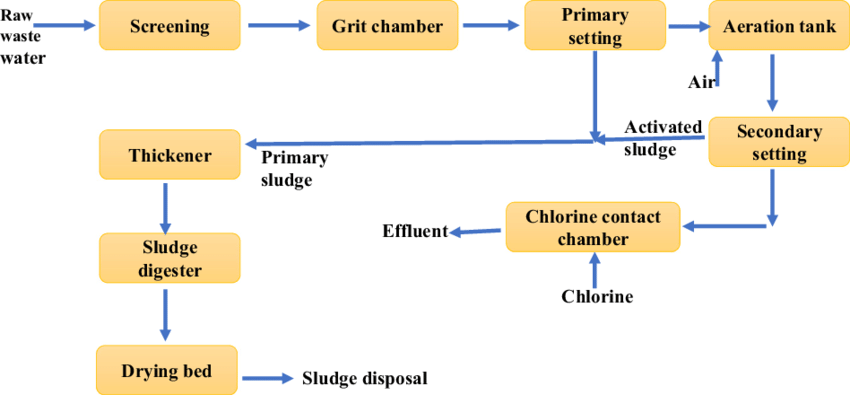What Does Reclaim Waste Mean?
Table of ContentsWhat Does Reclaim Waste Do?Our Reclaim Waste StatementsUnknown Facts About Reclaim WasteReclaim Waste for BeginnersThe Definitive Guide to Reclaim Waste
Check out the types, occurrences, and kinds of liquid waste. Domestic sewage waste describes the waste and items from a domestic septic system. This kind of waste is developed by people in residences, schools, and various other buildings. This only consists of septic containers that have a drain field. The correct monitoring and disposal of domestic sewer waste call for fluid waste to be transferred to a sewer therapy plant where the proper techniques and equipment are put on purify and throw away waste.
Business waste usually includes potential dangers, such as combustible materials or a combination of liquid and strong waste items, and requires a much more advanced and thorough disposal process. The disposal of business waste usually involves the purification of waste prior to transport to ensure secure and correct disposal. Hazardous waste is produced from by-products and runoff of industrial processes and manufacturing.
This sort of waste can not use the same sewer monitoring transport or procedures as septic or business liquids. The industrial waste management procedure requires the inspection and testing of liquid waste prior to it goes through the disposal process (liquid waste disposal). Runoff waste is the liquid waste that originates from runoff and excess stormwater in highly booming locations or cities
Overflow waste can trigger contamination and flooding otherwise handled correctly. Learn a lot more regarding sewer cleansing and waste monitoring. Making certain correct waste management can stop catastrophes and lower ecological injury. Both individuals in domestic settings and experts in commercial or manufacturing markets can take advantage of comprehending the processes and laws of liquid waste monitoring.
The Basic Principles Of Reclaim Waste
Contact PROS Services today to find out about our waste administration and disposal solutions and the correct ways to care for the fluid waste you create.
(https://www.ted.com/profiles/48198485/about)Do you know what takes place to your water when you pull the plug, flush the commode or drain pipes the cleaning device? No? Well, it deserves recognizing. This supposed 'wastewater' is not just a vital source yet, after treatment, will be released to our land, rivers or the sea. Made use of water from bathrooms, showers, bathrooms, cooking area sinks, washings and commercial procedures is referred to as wastewater.

water used to cool down machinery or clean plant and equipment). Stormwater, a kind of wastewater, is overflow that moves from agricultural and city areas such as roof coverings, parks, yards, roads, paths and seamless gutters into stormwater drains pipes, after rainfall. Stormwater moves unattended directly to local creeks or rivers, at some point reaching the sea.
Excitement About Reclaim Waste
In Queensland, the majority of wastewater is treated at sewage treatment plants. Wastewater is transferred from domestic or industrial websites with a system of sewers and pump terminals, recognized as sewerage reticulation, to a sewage treatment plant.
The Division of Natural Resources encourages city governments concerning handling, operating and preserving sewage systems and treatment plants. In unsewered locations, local federal governments might call for owners to install individual or household sewage treatment systems to deal with residential wastewater from bathrooms, cooking areas, bathrooms and laundries. The Division of Natural Resources authorizes the usage of house systems when they are proven to be effective.
In some brand-new class, treatment of some stormwater to remove litter, sand and gravel has actually started utilizing gross pollutant traps. Wastewater treatment occurs in four phases: Removes solid issue.
Uses tiny living microorganisms understands as micro-organisms to damage down and remove remaining liquified wastes and great fragments. Micro-organisms and wastes are included in the sludge.
Not known Facts About Reclaim Waste
Nutrient elimination is not readily available at all sewage treatment plants due to the fact that it calls for costly specialist devices. Clear liquid effluent created after treatment might still consist of disease-causing micro-organisms - liquid waste removal melbourne.

Most wastewater streams right into the sewage system. Under the Act, neighborhood federal governments administer approvals and licences for ecologically appropriate activities (ERAs) involving wastewater releases that might have a regional impact.
What Does Reclaim Waste Do?
Surveillance supplies factual information concerning water high quality and can validate that licence problems are being fulfilled. The details obtained with surveillance offers the basis for making water high quality choices.